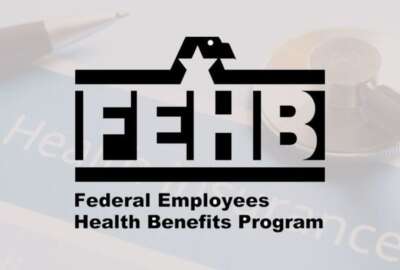
Insight By KPMG
The changing landscape of citizen experience
While the goal of government organizations is to serve the public, the true challenge is to keep track of how the public is ultimately served.
This content is provided by KPMG
While the goal of government organizations is to serve the public, the true challenge is to keep track of how the public is ultimately served. In the past, that could mean a citizen answering a simple survey, but that citizen’s interaction with an agency has grown more complex and dynamic, so tracking citizen experience (CX) is likewise changing.
Making CX better in an organization like the Department of Veterans Affairs (VA) can only help the entire process. “In the healthcare arena, with so much emphasis on reducing costs, improving access, quality and especially actual healthcare, improving CX is a great way to address some of these issues,” said Tom Dowd, Principal & Federal Healthcare Advisory Leader at KPMG. “In addition, for the public, CX improvement is a means for better access to information and services.”
While CX has always been a concern for government agencies, private companies have usually led the way. “What we’ve seen consistently in customer service indices such as Forrester’s Customer Experience Index or KPMG’s Customer Experience Excellence Report is that government comes out on the bottom,” said Quimby Kaizer, Principal, Federal Advisory at KPMG. “In this area, the government is lagging behind commercial organizations.”
However, this is about to change. The 2018 Presidential Management Agenda requires the government to provide customer service comparable to private-sector organizations – particularly high-impact service providers like the Centers for Medicare & Medicaid and the VA. In addition, the Office of Management and Budget’s (OMB) Circular A-11 for the fiscal year 2021 budget cycle added a new section on providing better service to citizens. “Customer experience is something the president is looking for all federal agencies to improve,” added Kaizer.
More Than Just Tech Upgrades
The tendency to look at a challenge like CX as solely a technological hurdle is a common impulse. While improvements in technology can only help an area like CX, it is only one piece in a much larger puzzle.
“Government entities have been thinking predominately of technology upgrades in the CX realms,” said Kaizer. “An organization might invest greatly in mobile technologies, or a chat bot in a contact center, however, it has typically been managed independently and separately from other channels through which a customer interacts.” This sort of ‘one-dimension solution’ way of thinking doesn’t take in the whole customer experience picture.
Kaizer added, “What is essential is that organizations that are embarking on improving CX have to look at it holistically. It’s got to be people, process, technology and data all thought of together, that CX and operational improvements are really synonymous. If you segment those initiatives out, you are sub-optimizing.”
Only as Good as the Information
In order to determine how to improve an agency’s CX, one needs to look at the data it is producing. “Data is really the underpinning of helping organizations understand who their customers are and what their experience is,” said Kaizer. “KPMG’s Customer Experience Excellence Center has identified six pillars of CX, and data enables a couple of those, personalization being the most prominent.” The other five – Integrity, Expectations, Resolution, Time and Effort, and Empathy – are driven by data to a lesser degree.
Kaizer went on to say, “The more an organization understands what their customer is doing, how they are interacting, what their experience has been, who they are and why they’re coming back, then it’s going to be easier to personalize that interaction. The data is a basic building block of identifying and improving a customer’s experience.”
There are solutions available that can help with this transformative process. “The VA, who is leading the CX area for the president’s management agenda and making great strides in its own veteran experience initiatives, just adopted customer feedback management software,” Kaizer pointed out. “So there is software out there that helps organizations capture the information in a way that can be used for this purpose.”
The Challenge of Measuring CX
While improving CX is undoubtedly a good thing, figuring out how much it has improved is just as important. “While all organizations are struggling with having the data to support CX,” said Kaizer, “government entities have to collect data they hadn’t collected before, or even thought about. It’s not just about contact with a citizen and how happy they are with that single interaction, but instead it’s about the experience that person is having. So, there are a lot of challenges in government to try to have the data, to define what it is, to see what data is available in the organization to support this.”
Much of this challenge involves adopting entirely new techniques. “There are opportunities using techniques like sentiment analysis,” said Dowd, “that allow you to manage or get insight in terms of a customer’s experience at a very granular level on a particular interaction. When those pieces are put together, it starts to paint a more holistic picture of the aggregate CX. This requires a new form of measurement that traditionally organizations have struggled with because it is very technology-dependent, and it’s a different way of thinking about how to interact with a customer.”
Dowd added, “It’s about a change in paradigm in the types of data that organizations are collecting. A huge challenge going forward is how to identify these sources of data and curate that data into something that gives a much different overview of the customer experience. That is an enormous task that requires much more of the organization to work together, rather than just the IT shop.”
Kaizer went on to add, “There are also indices that provide a benchmark for an organization to say, ‘How do we compare to others in other industries or within an industry.’ Our annual Customer Experience Excellence Analysis is just one example of this.”
Transforming and improving CX is not an easy process. However, many government organizations are now considering undertaking it. “They are doing journey mapping, and they have a very good vision of what the citizen’s journey is,” said Kaizer. “But that is the easier part of transforming CX. The hard work is in changing the operation – breaking down those silos across the organizational functions – in order to achieve a different experience for a customer.”
Copyright © 2024 Federal News Network. All rights reserved. This website is not intended for users located within the European Economic Area.




